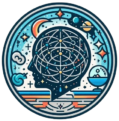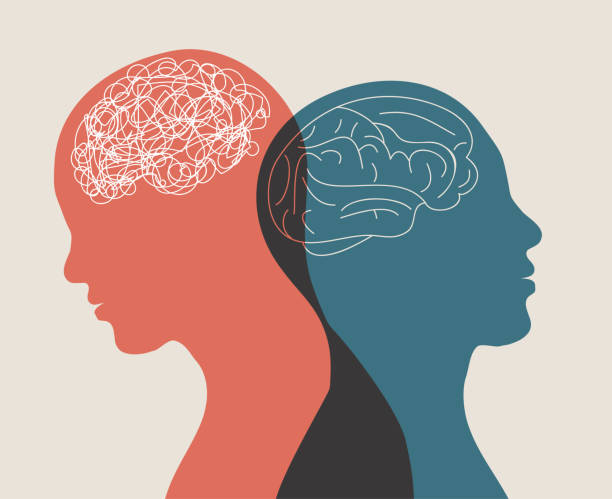Not All Heroes Wear Capes (Some Carry Whiteboard Markers)
When you think of superheroes, who comes to mind? Maybe Spider-Man swinging through skyscrapers, Wonder Woman deflecting bullets, or Iron Man blasting into the sky. But if you peek into a bustling classroom on a random Tuesday morning, you’ll find real superheroes in action: teachers.
They don’t leap tall buildings in a single bound, but they leap over logistical nightmares, curriculum changes, and playground drama. They don’t wield magic hammers, but they wield dry-erase markers that somehow always squeak at the worst possible moment. And unlike comic book heroes, teachers rarely get flashy costumes. (Unless you count the “World’s Best Teacher” mug that doubles as a shield against exhaustion.)
But here’s the secret: teachers do have superpowers. Not ones fueled by radioactive spiders or alien technology, but by psychology. Their powers include the ability to read minds (sort of), travel through time (educationally speaking), and even shape-shift to adapt to countless learning needs.
This Teachers’ Day, let’s explore these superpowers—and how we can support the heroes who wield them.
Read More: Guru Purnima
1. The Power of Theory of Mind
Every teacher has that uncanny moment: they scan the room, pause mid-lesson, and say, “Okay, let’s explain that another way.” The students breathe a sigh of relief because somehow, the teacher just knew they were confused.
This is the psychological power known as Theory of Mind (ToM)—the ability to understand that others have beliefs, knowledge, and perspectives different from our own (Wellman, 2014). For teachers, ToM is not just handy—it’s essential. It helps them anticipate misunderstandings, read emotional states, and connect with students as individuals.
Real-Life Example:
A student nods along while secretly lost. A teacher with sharpened ToM catches the glazed eyes and intervenes before confusion spirals into frustration.
Why It Matters:
-
Builds empathy and trust in classrooms.
-
Helps teachers anticipate questions before they’re asked.
-
Allows better tailoring of explanations and examples.
Science Says: Children begin developing ToM around age 4–5, often measured by the “false belief task.” By adulthood, ToM becomes sophisticated enough for a teacher to manage 30 different minds at once (Miller, 2012).
In other words: teachers don’t have X-ray vision, but they can often see what’s happening inside their students’ heads—an ability every superhero would envy.
2. Mastery of Working Memory
Teachers are the Doctor Who of education. They constantly take students on mental journeys: connecting what was taught yesterday to what’s needed today, and hinting at what will matter tomorrow.
This power is rooted in working memory—the brain’s “scratchpad” for temporarily holding and manipulating information (Baddeley, 2012). Without it, students would forget yesterday’s lesson faster than you can say “pop quiz.”
Why It Matters:
-
Working memory capacity predicts academic performance (Gathercole & Alloway, 2008).
-
Recapping strengthens retention and builds neural connections.
-
Chunking information prevents cognitive overload—essential when teaching complex ideas.
Funny But True:
Working memory has limits. That’s why after lunch, many students can remember the lyrics to a TikTok song but not the instructions for math homework.
Teacher Hack: Encourage note-taking, diagrams, and memory aids. This isn’t “cheating”—it’s like handing students a user manual for their mental time machine.
3. The Differentiation Superpower
If teachers had a universal motto, it would be: adapt or despair. Every classroom is a kaleidoscope of learning styles, backgrounds, and abilities. To reach them all, teachers rely on the art of differentiation—or as we’ll call it, shape-shifting.

The Psychology Behind It: Differentiation involves tailoring content, processes, and assessments to fit diverse learners (Tomlinson, 2014). It acknowledges that not all students learn in the same way, at the same pace, or with the same strategies.
Why It Matters:
-
Keeps advanced students challenged while supporting those who struggle.
-
Increases motivation because everyone feels capable of success.
-
Builds inclusive classrooms where every student belongs.
Funny But True:
Teachers are human Swiss Army knives: explaining photosynthesis with a rap for one group, a diagram for another, and a pizza analogy for the rest.
Science Says: Differentiation boosts both achievement and motivation when done effectively (Hall, Strangman & Meyer, 2003).
Teacher Hack: Use “choice boards”—offering students different ways to demonstrate learning (draw, write, debate, or design). Same goal, different paths. That’s shape-shifting in action.
4. Social Learning in Action
Every superhero has a sidekick. For teachers, the best allies are students themselves. Enter Vygotsky’s Zone of Proximal Development (ZPD)—the idea that learners can achieve more with guidance from someone just a little more skilled (Vygotsky, 1978).

Why It Works:
-
Students often feel safer asking peers “silly” questions.
-
Explaining concepts to others reinforces understanding.
-
Collaborative learning builds community and empathy.
This is why group work, when well-structured, is more than a time-filler—it’s a psychological super-tool.
The Hidden Costs of Superpowers
But let’s be real: superpowers come with kryptonite. For teachers, it’s burnout.

Research shows teacher stress and emotional exhaustion affect not only their health but also classroom climate and student outcomes (Jennings & Greenberg, 2009). Constant mind-reading, time-traveling, and shape-shifting can leave even the strongest educators drained.
Common Kryptonite:
-
Endless grading and paperwork
-
Large class sizes
-
Pressure to meet test scores
-
Lack of recognition
And unlike comic book heroes, teachers don’t regenerate after a dramatic montage. They need support.
How We Can Support Our Superpowered Teachers
If we want teachers to keep saving the day, society must step up as their support squad. Here’s how:
1. Strong School Leadership
Supportive principals reduce teacher turnover and boost morale (Ingersoll, 2001). Clear communication, reduced paperwork, and encouragement for creativity go a long way.
2. Useful Professional Development
Effective training is collaborative, sustained, and relevant—not endless PowerPoints (Darling-Hammond et al., 2017).
3. Peer Mentoring
Mentorship and collaboration help teachers share strategies and survive the “origin story” years (Kraft, Blazar & Hogan, 2018).
4. Mental Health Resources
Mindfulness and counseling programs improve teacher well-being and student outcomes (Roeser et al., 2012).
5. Smaller Class Sizes
Managing 40 students at once is like juggling flaming torches while on a unicycle. Smaller classes lead to better learning and healthier teachers (Finn & Achilles, 1999).
6. Genuine Appreciation
Recognition increases teacher satisfaction and commitment (Collie, Shapka & Perry, 2012). Beyond flowers and mugs, this means fair pay, public respect, and simple “thank yous.”
Why Teachers Deserve Their Capes
Let’s recap our heroes’ powers:
-
Mind-Reading: Anticipating student thoughts.
-
Time Travel: Bridging past and present learning.
-
Shape-Shifting: Adapting to diverse needs.
-
Sidekick Effect: Harnessing peer learning.
But superpowers alone aren’t enough. Heroes need allies—leaders, parents, policymakers, and communities willing to support them.
When teachers thrive, students thrive. And when students thrive, society flourishes.
The Real Avengers Initiative
If Marvel or DC ever runs out of superheroes, they should visit the nearest teachers’ lounge. Inside are individuals who juggle lesson plans, student emotions, and parent emails with remarkable grace. They don’t just teach subjects—they shape futures.
But unlike comic book heroes, teachers don’t heal overnight. They need support systems that protect their well-being and sustain their passion.
So this Teachers’ Day, let’s go beyond giving apples and hashtags. Let’s pledge to support our teachers’ superpowers—so they can continue mind-reading, time-traveling, and shape-shifting their way into the future.
Because the greatest superpower of all? Believing in teachers.
References
Baddeley, A. (2012). Working memory: Theories, models, and controversies. Annual Review of Psychology, 63(1), 1–29.
Collie, R. J., Shapka, J. D., & Perry, N. E. (2012). School climate and social–emotional learning: Predicting teacher stress, job satisfaction, and teaching efficacy. Teaching and Teacher Education, 28(6), 1034–1045.
Darling-Hammond, L., Hyler, M. E., & Gardner, M. (2017). Effective teacher professional development. Learning Policy Institute.
Finn, J. D., & Achilles, C. M. (1999). Tennessee’s class size study: Findings, implications, misconceptions. Educational Evaluation and Policy Analysis, 21(2), 97–109.
Gathercole, S. E., & Alloway, T. P. (2008). Working memory and learning: A practical guide for teachers. Routledge.
Ingersoll, R. (2001). Teacher turnover and teacher shortages: An organizational analysis. American Educational Research Journal, 38(3), 499–534.
Jennings, P. A., & Greenberg, M. T. (2009). The prosocial classroom: Teacher social and emotional competence in relation to student and classroom outcomes. Review of Educational Research, 79(1), 491–525.
Kraft, M. A., Blazar, D., & Hogan, D. (2018). The effect of teacher coaching on instruction and achievement: A meta-analysis. Review of Educational Research, 88(4), 547–588.
Miller, S. A. (2012). Theory of mind: Beyond the preschool years. Cognitive Development, 27(4), 521–533.
Roeser, R. W., Skinner, E., Beers, J., & Jennings, P. A. (2012). Mindfulness training and teachers’ professional development: An emerging area of research and practice. Child Development Perspectives, 6(2), 167–173.
Tomlinson, C. A. (2014). The differentiated classroom: Responding to the needs of all learners. ASCD.
Vygotsky, L. S. (1978). Mind in society: The development of higher psychological processes. Harvard University Press.
Wellman, H. M. (2014). Making minds: How theory of mind develops. Child Development Perspectives, 8(2), 69–73.
Subscribe to PsychUniverse
Get the latest updates and insights.
Join 3,030 other subscribers!
Niwlikar, B. A. (2025, September 5). The Psychology of a Teacher’s 4 Superpowers. PsychUniverse. https://psychuniverse.com/psychology-of-a-teachers-superpowers/



